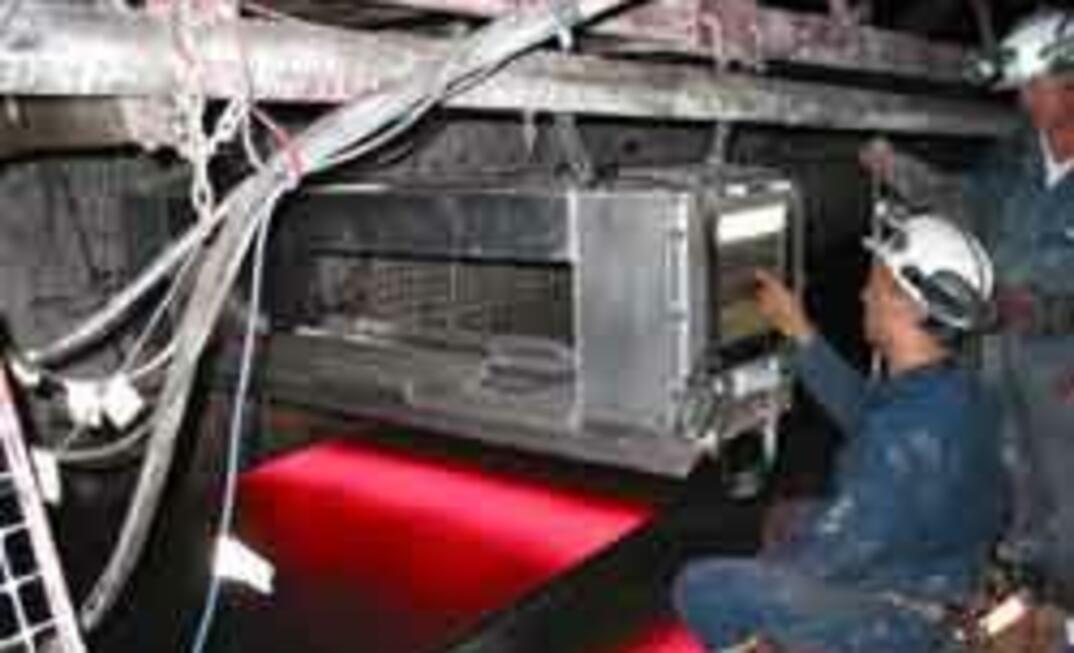The Belt Vision System was developed through an alliance between Consol Energy and the National Robotics Engineering Consortium of the Carnegie Mellon University.
It is being sold and marketed through Maryland, US-based company, Beitzel Corporation, and was recently launched commercially there. Nine systems have recently been purchased according to Rick Bray, Beitzel sales manager.
The first system went into service in December 2001 and remains in use today. There are six units currently in service at Consol Energy mines with a further four being built for Consol mines.
Two of these systems are located on longwall belts, two more on development sections, and two on the most inbye mainline belt.
In one application the system was used on belt of over 12,000 feet in length that had up to 160 splices, servicing miner coal. Prior to the installation of the Belt Vision System this belt was breaking about every other week. Since the installation the breaks have been eliminated.
While US mines use mechanical splices regularly, Australian operations tend to favour repairing belts by vulcanising them, typically retaining a few mechanical splices for belt retractions.
There are pros and cons to both methods. While vulcanising a belt supposedly returns the belt to its original condition, the process is lengthy and expensive and has to be done during maintenance windows. Mechanical splices are quickly installed and cost a fraction of the cost of vulcanising, but have a life of three months.
Bray said that given the ability of the Belt Vision System to monitor wear on mechanical splices 24/7, Australian mines might be well served considering using mechanical splices more frequently.
An additional spin-off is that the images generated by the system allow improved quality control on good splicing practice including the use of proper rivets, squaring of belt before splice installation, use of proper splice kit, and proper orientation of splice.
The system, which comprises two cameras, two light bars and a computer, mounts to the top bed-rail of a conveyor structure. Mounting takes about an hour.
Typically it is mounted between the coal carrying side and return side of the belts and views the top of the return. The system only requires 36 inches of separation between the belt, and the system can accommodate belt sizes of up to 84 inches.
The camera software situated underground captures the images of splices and provides a user interface for belt inspection at the system installation point.
A Web server at a remote computer, usually on the surface, collects and stores the images in a database. These can be viewed anywhere on Internet Explorer by anyone connected to the mine’s network, thus facilitating decisions that are in the best interests of the mine and not the shift.
“Two primary benefits of using the Belt Vision System have been observed,” Bray said. “In the first place belt breaks have been eliminated on belts on which the Belt Vision System has been installed.
“Secondly, lost production time due to the remaking of splices during production shifts has been significantly reduced. As mine personnel, by monitoring the splices, get a feel for splice degradation profiles, splice change-outs can be planned for scheduled downtime.”
The system can also be used to target the location of belt to be removed when retreating and where to add belt on advance in order to remove potentially problematic splices from the belt line.
In another example of the system’s effectiveness, two splices broke on a longwall panel within the first week of starting a new panel. In both cases the splices were unzipping on the right hand side and had six pairs of clips disengaged from the splice pin.
After the second occurrence the mine established a rule that stated when six clips are missing from one side of the belt, stop the belt, and replace the splice. The longwall belt did not break in that panel. In the three previous panels, the longwall belt was breaking at an average rate of once per month
“At every installed site the visualization of the splices has led to the enumeration of rules-of-thumb on what patterns of splice damage carry a high risk of break,” said consulting analyst Bruce Bancroft of Consol Energy, who has been closely involved in the system’s development.
For lighting the system can either fluorescents or LEDs. The fluorescent solution is cheaper but bulbs must be changed out twice a year. The LED’s are a 100,0000 hour plus solution.
“Belt breaks at mechanical splices occur frequently enough to justify continuous monitoring,” Bancroft said.
“At the rate revenue is generated in a longwall mine the prevention of one belt break will far exceed the cost of this system. Pulling broken belt back together generally takes a minimum of four hours and is a hazardous task. A damaged splice can be replaced in 60 minutes. In fact the system can be economically justified on simply shifting belt splice repair from production to maintenance shifts. The system provides the mine with a tool to manage mechanical splices”
There are no competing systems currently available on the market and formal patent claims were filed in January 2003 along with a filing for international coverage.
























